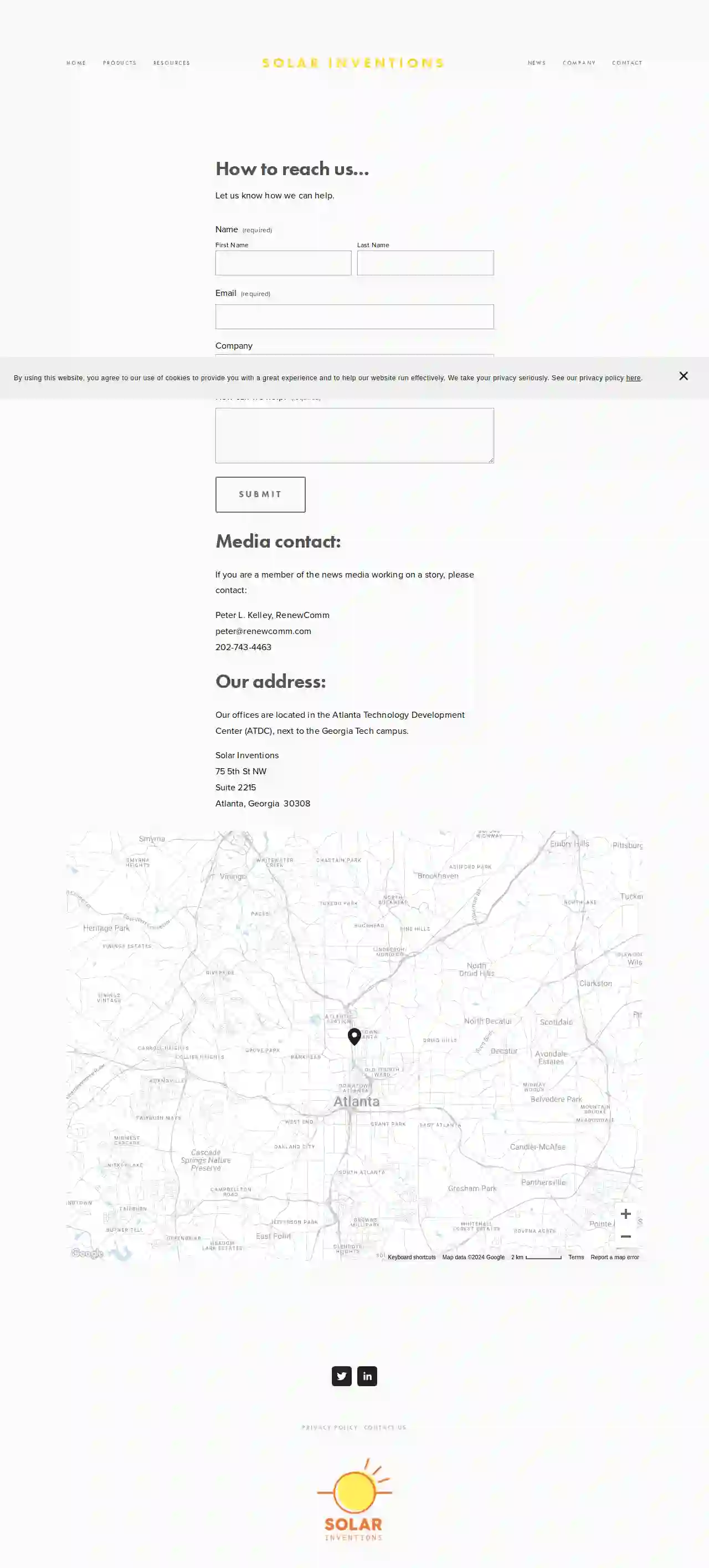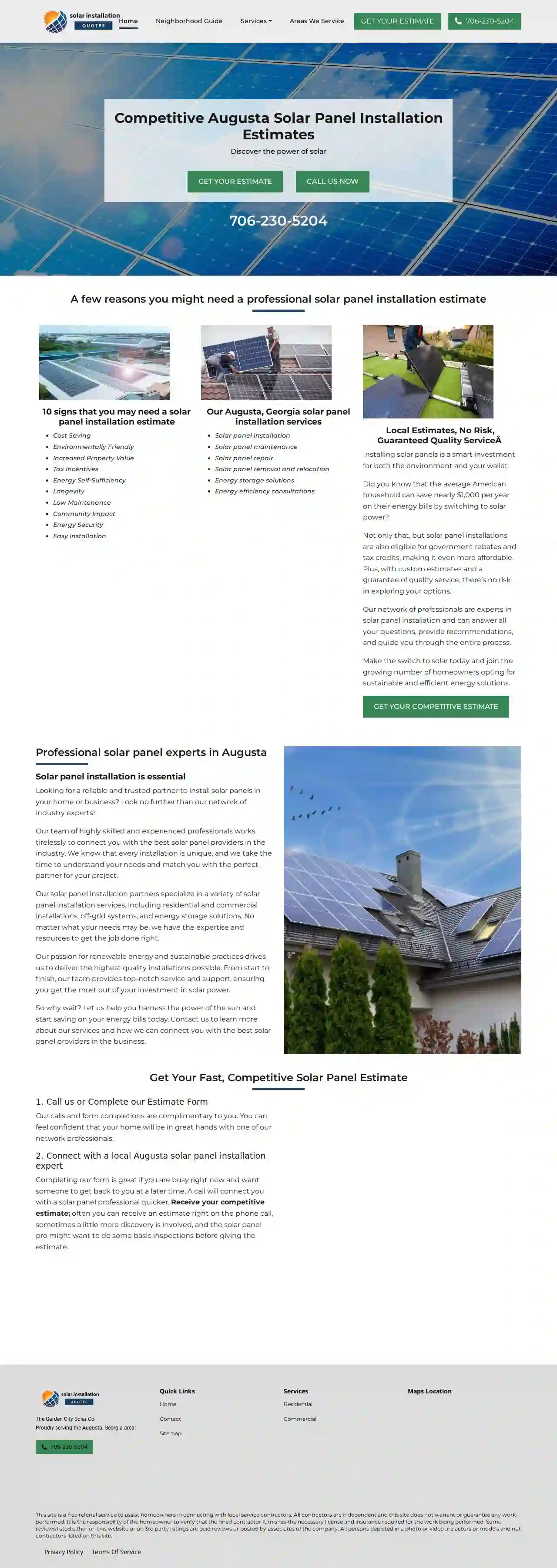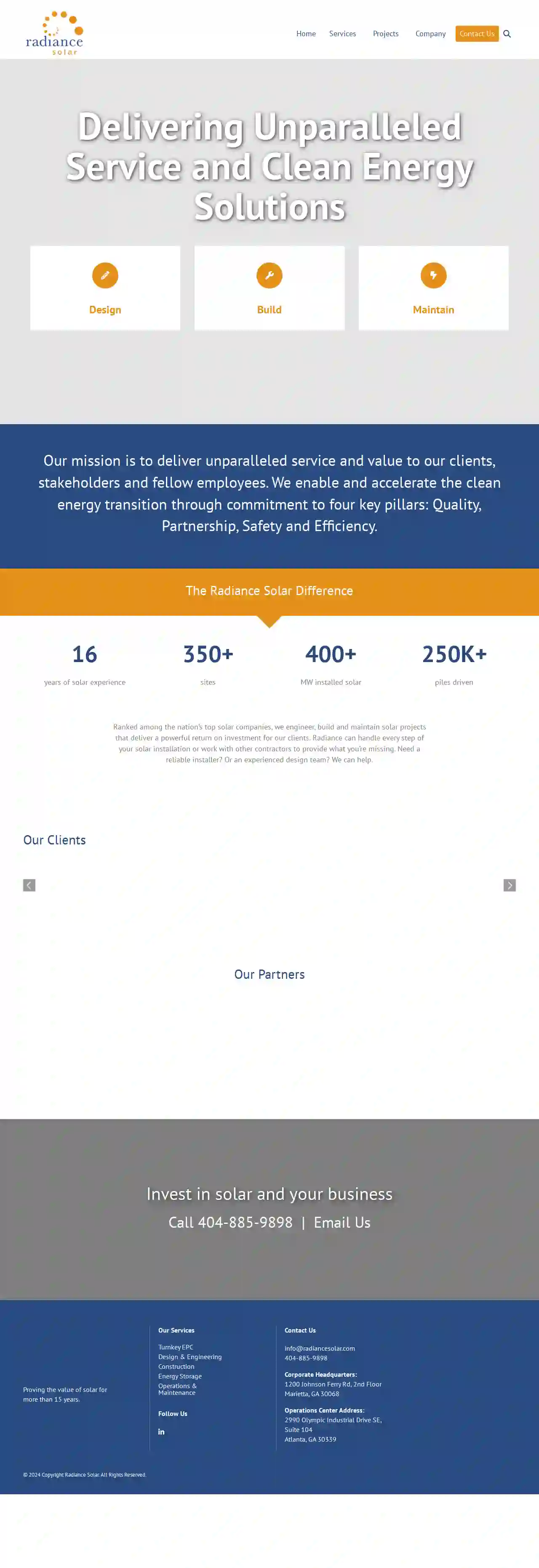Solar Installers Blakely
Top 10 Solar Installers in Blakely
Receive 3 FREE Solar Panel Installer quotes for your project today! Compare profiles, reviews, accreditations, portfolio, etc... and choose the best service.

Solar Inventions
Suite 2215, Atlanta, Georgia, 75 5th St NW, 30308, USSolar Inventions is a company dedicated to accelerating clean energy innovation. Founded by Gregg Freishtat and Dr. Ben Damiani, the company aims to expand the flexibility and effectiveness of traditional solar technology. Their technology has received recognition, including winning the first-ever American-Made Solar Prize in 2019.
- Services
- Why Us?
- Accreditations
- Our Team
- Testimonials
- Gallery
Get Quote
Solar Plus LLC
3.97 reviews715 Peachtree St. NE Suite 100, Atlanta, GA 30308, 30308, USSolar Plus is a full-service solar company serving Atlanta, Charlotte, Greenville, Columbia and beyond. The key to our success is that company president Don Tonic actively directs all solar projects, and is dedicated to the hiring, training, and retention of quality installation experts. The entire Solar Plus team is dedicated to delivering a quality solar electric system on every project.
- Services
- Why Us?
- Accreditations
- Our Team
- Gallery
Get Quote
Georgia Solar Pros
4.933 reviews1775 Pine Park Rd, Cairo, 39828, USGeorgia Solar Pros is a locally owned and operated solar company based in Cairo, near Thomasville, GA. We bring nearly 20 years of construction, roofing, and electrical contracting experience to members of our community looking to go solar. We work with residential and commercial clients and pride ourselves on delivering the highest quality, affordable solar solutions.
- Services
- Why Us?
- Our Team
- Gallery
Get Quote
The Garden City Solar Co
123 Main St, Suite 100, Augusta, 30901, USThe Garden City Solar Co is a local business that specializes in solar system design and consultation services in Augusta. They offer competitive solar panel installation estimates and provide services such as solar panel installation, maintenance, repair, removal, and relocation. They also offer energy storage solutions and energy efficiency consultations. The company is passionate about renewable energy and sustainable practices, aiming to deliver high-quality installations and support to customers.
- Services
- Why Us?
- Accreditations
- Our Team
- Testimonials
- Gallery
Get Quote
Creative Solar USA
4.482 reviewsKennesaw, GA, All mail sent here, P.O. Box 1077, 30156, USCreative Solar USA is a Georgia-based, turn-key installer of innovative solar panel systems for residential homes and commercial buildings. Our NABCEP Certified Installers ensure our clients receive the highest quality solar energy systems in the industry and remain committed to clients long after the installation is complete. We don't just build PV systems for our clients – we build relationships.
- Services
- Why Us?
- Accreditations
- Our Team
- Testimonials
- Gallery
Get Quote
Alternative Energy Southeast, Inc.
4.853 reviewsAthens, GA, 160 Collins Industrial Blvd, 30601, USAlternative Energy Southeast, Inc. is a team of Georgia solar professionals on the leading edge of our trade. We go above and beyond to ensure our residential, commercial & industrial, and government customers are treated with genuine integrity and their expectations are exceeded in every respect.
- Services
- Why Us?
- Accreditations
- Our Team
- Testimonials
- Gallery
Get Quote
SunPeach Solar
534 reviews1234 Georgia Peach Ave, Suite 312, Atlanta, 30328, USSun Peach Solar is a leading nationwide Solar Power company, providing solar panel installation & solar power systems for home & business near you. Our team will work with you to design a solar energy system that is tailored to meet your cost & energy needs. By switching to solar energy, you will save money on your energy bills and reduce your dependence on traditional energy sources. Plus, you’ll be doing your part to help the environment!
- Services
- Why Us?
- Accreditations
- Our Team
- Testimonials
- Gallery
Get Quote
USASolarPower
Beverly Hills, CA, 123 Solar Way, 90210, USAt Powur, we are dedicated to providing innovative solar solutions that empower individuals and communities to harness the power of the sun. Our mission is to accelerate the transition to a sustainable energy future by making solar energy accessible, affordable, and efficient. With a team of experienced professionals and a commitment to quality, we strive to deliver exceptional service and products that meet the highest standards.
- Services
- Why Us?
- Accreditations
- Our Team
- Testimonials
Get Quote
Solairgen Inc
4.48 reviewsPO Box 1109, Dahlonega, 30533, USSolairgen offers a comprehensive range of solar installation training courses, from entry-level to advanced, designed to equip students with the skills to thrive in the solar energy field. Their goal is to provide affordable and accredited training, enabling individuals to start a career in solar installation. The courses cover basic to advanced concepts, including solar panel installation, maintenance, and battery systems installation. Solairgen also prepares students for national certifications, such as the NABCEP PV Associate Credential certification exam.
- Services
- Why Us?
- Accreditations
- Our Team
- Testimonials
- Gallery
Get Quote
Radiance Solar
4.19 reviews1200 Johnson Ferry Rd, 2nd Floor, Marietta, 30068, USRadiance Solar is a leading solar company with over 16 years of experience in the solar industry. They offer a range of services including turnkey EPC, design and engineering, construction, energy storage, and operations and maintenance. Their mission is to deliver unparalleled service and value to their clients, stakeholders, and fellow employees, enabling and accelerating the clean energy transition through commitment to four key pillars: Quality, Partnership, Safety, and Efficiency.
- Services
- Why Us?
- Accreditations
- Our Team
- Testimonials
- Gallery
Get Quote
Over 4,210+ Solar Installers in our network
Our solar pros operate in Blakely and surroundings!
SolarCompaniesHub has curated and vetted Top Solar Installers in and around Blakely. Find a top & reliable business today.
Frequently Asked Questions About Solar Installers
- String Inverters: Connect multiple panels in a series (a 'string'). A cost-effective option for simple systems, but a single panel issue can affect the entire string.
- Microinverters: Attach to each individual solar panel, maximizing energy production even if some panels are shaded. They are more expensive but offer greater efficiency and monitoring capabilities.
- Power Optimizers: Similar to microinverters, but less expensive. They optimize the output of each panel and provide individual panel monitoring, but a central inverter is still required.
- Hybrid Inverters: Combine a solar inverter with a battery charge controller, allowing for seamless integration of battery storage.
- Adequate Sunlight: Unobstructed sunlight for a significant portion of the day.
- Sufficient Space: Enough space to accommodate the desired number of panels.
- Structural Integrity: A strong roof structure capable of supporting the weight of the panels.
- Appropriate Orientation and Tilt: Ideally, the roof should face south (in the Northern Hemisphere) or north (in the Southern Hemisphere) with a tilt angle close to the latitude of your location. However, other orientations and tilts can still be effective.
What are the different types of solar inverters?
How do I know if my roof is suitable for solar panels?
Do solar panels increase my home value?
What happens if my roof needs to be replaced after I install solar panels?
What are the different types of solar inverters?
- String Inverters: Connect multiple panels in a series (a 'string'). A cost-effective option for simple systems, but a single panel issue can affect the entire string.
- Microinverters: Attach to each individual solar panel, maximizing energy production even if some panels are shaded. They are more expensive but offer greater efficiency and monitoring capabilities.
- Power Optimizers: Similar to microinverters, but less expensive. They optimize the output of each panel and provide individual panel monitoring, but a central inverter is still required.
- Hybrid Inverters: Combine a solar inverter with a battery charge controller, allowing for seamless integration of battery storage.
How do I know if my roof is suitable for solar panels?
- Adequate Sunlight: Unobstructed sunlight for a significant portion of the day.
- Sufficient Space: Enough space to accommodate the desired number of panels.
- Structural Integrity: A strong roof structure capable of supporting the weight of the panels.
- Appropriate Orientation and Tilt: Ideally, the roof should face south (in the Northern Hemisphere) or north (in the Southern Hemisphere) with a tilt angle close to the latitude of your location. However, other orientations and tilts can still be effective.
